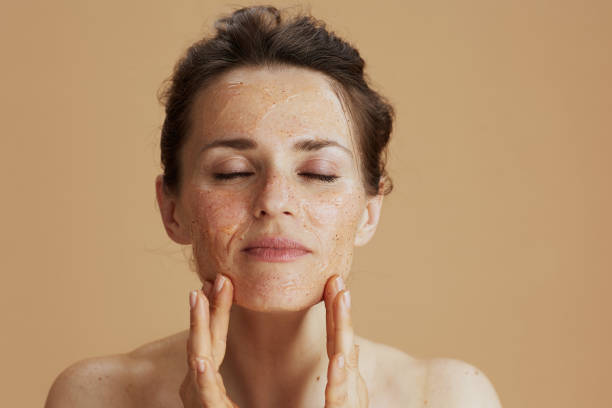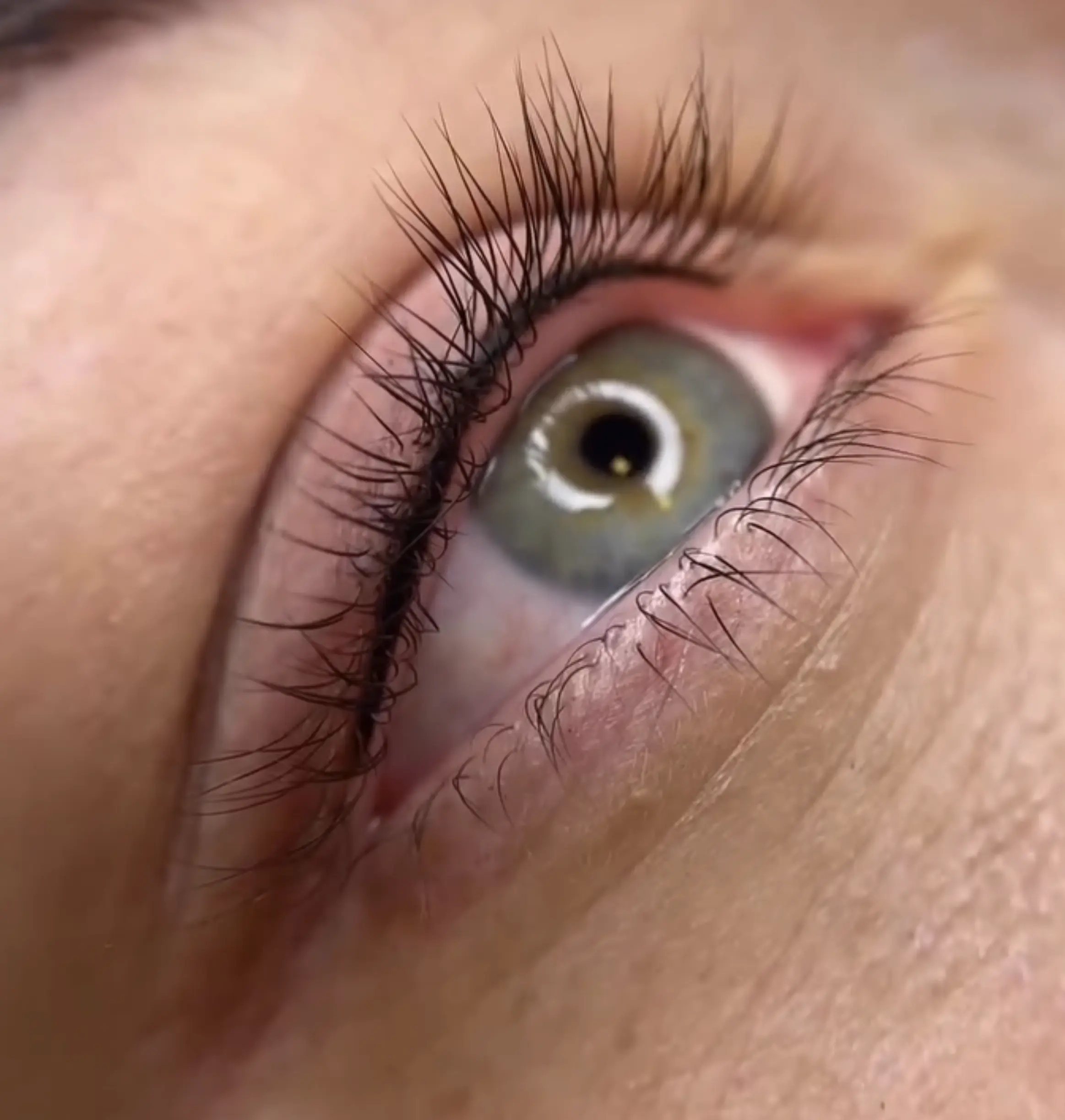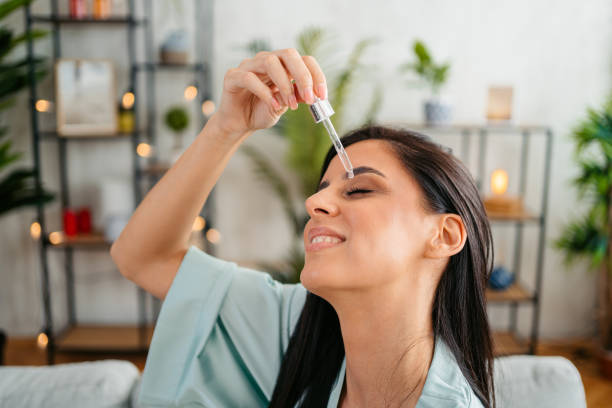When it comes to maintaining a radiant complexion, chemical exfoliants can be a game-changer. However, the question arises: how often should one use a chemical exfoliant? The answer is not one-size-fits-all. The main topic we’ll explore in this article is finding the perfect balance for the use of chemical exfoliants to maximize benefits without harming the skin. Factors such as skin type, exfoliant type, and strength all play crucial roles in determining the right frequency for you. We’ll delve into expert recommendations to help you create a safe and effective skincare routine.
Introduction to Chemical Exfoliation and Its Benefits

Chemical exfoliation involves using acids or enzymes to gently slough away dead skin cells, revealing more luminous and even skin underneath. Unlike physical exfoliants that use scrubbing particles, chemical exfoliants work by breaking down the ‘glue’ holding dead skin cells together. The benefits of such practice include improved skin texture, fewer breakouts, diminished fine lines, and a brighter complexion. Regular and correct use of a chemical exfoliant can truly transform the appearance of the skin, making it an essential step in any skincare regimen.
Types of Chemical Exfoliants and How They Work

Chemical exfoliants are skincare ingredients that help to remove dead skin cells by breaking the bonds that hold them together on the skin’s surface. These exfoliants promote smoother, clearer, and more even-toned skin. Below are the common types of chemical exfoliants and their mechanisms:
- AHAs (Alpha Hydroxy Acids):
Water-soluble acids derived from fruits and milk. They help peel away the surface of the skin so that new, more evenly pigmented skin cells may generate and take their place. Examples include glycolic acid and lactic acid. - BHAs (Beta Hydroxy Acids):
Oil-soluble acids that penetrate deeper into the pores to remove dead skin cells and excess sebum. They are particularly effective for acne-prone and oily skin types. Salicylic acid is a well-known BHA. - PHA (Polyhydroxy Acids):
These are considered gentler than AHAs and BHAs. PHAs provide similar exfoliation but do not penetrate the skin as deeply, making them ideal for sensitive skin. Examples include gluconolactone and lactobionic acid.
Determining How Often Should You Use a Chemical Exfoliant
Using chemical exfoliants requires a careful approach, beginning with patch testing and starting with reduced frequency, such as once a week, to observe how your skin reacts. Beginners should especially heed to allowing the skin to adapt. The skin type you have—be it oily, dry, combination, or sensitive—along with any specific skin conditions, will affect how often you should exfoliate. It’s essential to look out for signs of over-exfoliation such as irritation or increased sensitivity and adjust the frequency accordingly.
The Role of Concentration and pH in Exfoliation Frequency
Not only does the type of exfoliant matter, but so too do the concentration of active ingredients and the pH level of the product. The higher the concentration, the more powerful the exfoliant, which might necessitate less frequent use to prevent skin irritation. The same applies to pH levels; products closer to the skin’s natural pH are generally gentler, while those with lower pH levels might be more potent and thus used less often.
| Type of Exfoliant | Concentration | pH Level | Suggested Frequency |
|---|---|---|---|
| AHA | 5-10% | 3-4 | 1-2 times/week |
| BHA | 1-2% | 3-4 | 1-3 times/week |
| PHA | 10-15% | 3.5-4 | 2-3 times/week |
Customizing Your Chemical Exfoliation Routine
Creating an exfoliation schedule tailored to your skin’s needs will include considering personal skin concerns and lifestyle factors. Some may find exfoliating at night preferable to match their skin’s natural healing rhythm. It’s also important to consider what other skincare products you’re using in your routine to avoid potential interactions that could irritate the skin.
The Risks of Excessive Chemical Exfoliation
While it’s easy to chase quick results, too much chemical exfoliation can lead to detrimental effects such as a compromised skin barrier, persistent inflammation, and increased photosensitivity. If you find yourself experiencing negative side effects, it’s vital to cease using exfoliants and allow your skin to recover. If necessary, seek professional advice to help correct any damage and to recalibrate your skincare approach.
Professional Recommendations and Parting Advice
Using chemical exfoliants can greatly improve your skin’s appearance, but it’s important to use them correctly to avoid irritation. Here are some professional recommendations and parting advice for incorporating chemical exfoliants into your skincare routine:
- Start Slowly:
Begin with a low concentration and use it sparingly. Gradually increase frequency and strength as your skin adjusts. - Sun Protection:
Chemical exfoliants can make your skin more sensitive to the sun. Always apply a broad-spectrum sunscreen with an SPF of at least 30 during the day. - Skin Type Matters:
Choose the type of exfoliant that suits your skin type. AHAs are generally better for dry or sun-damaged skin, while BHAs are ideal for oily or acne-prone skin. - Patch Test:
Always perform a patch test on a small area of skin before using a new product broadly, particularly if you have sensitive skin. - Consult a Professional:
If unsure about which product to use or how to use it, consult a dermatologist or skincare professional.
Conclusion
To encapsulate, the frequency of chemical exfoliation depends upon an array of factors including skin type, product strength, and individual skin concerns. Starting slow and monitoring your skin’s reaction is pivotal to determining your ideal routine. Remember, chemical exfoliation can lead to tremendous benefits when performed correctly, so take the time to customize your approach. And when in doubt, consulting a dermatologist or skincare professional can guide you to the safest and most effective regimen for your unique skin.
FAQs on Chemical Exfoliation Frequency
1. Can the frequency of chemical exfoliation change with seasons or weather conditions?
Yes, skin may require different care with seasonal changes….
2. How do I know if I’m over-exfoliating my skin?
Signs of over-exfoliation include redness, irritation, increased sensitivity…
3. Are there any skin types that should avoid chemical exfoliation altogether?
While most skin types can benefit from chemical exfoliation…
4. Can I use both AHA and BHA exfoliants together?
It’s possible to use both AHA and BHA exfoliants…
5. Should the frequency of chemical exfoliation change as I age?
As skin matures, it may become drier and more sensitive…



